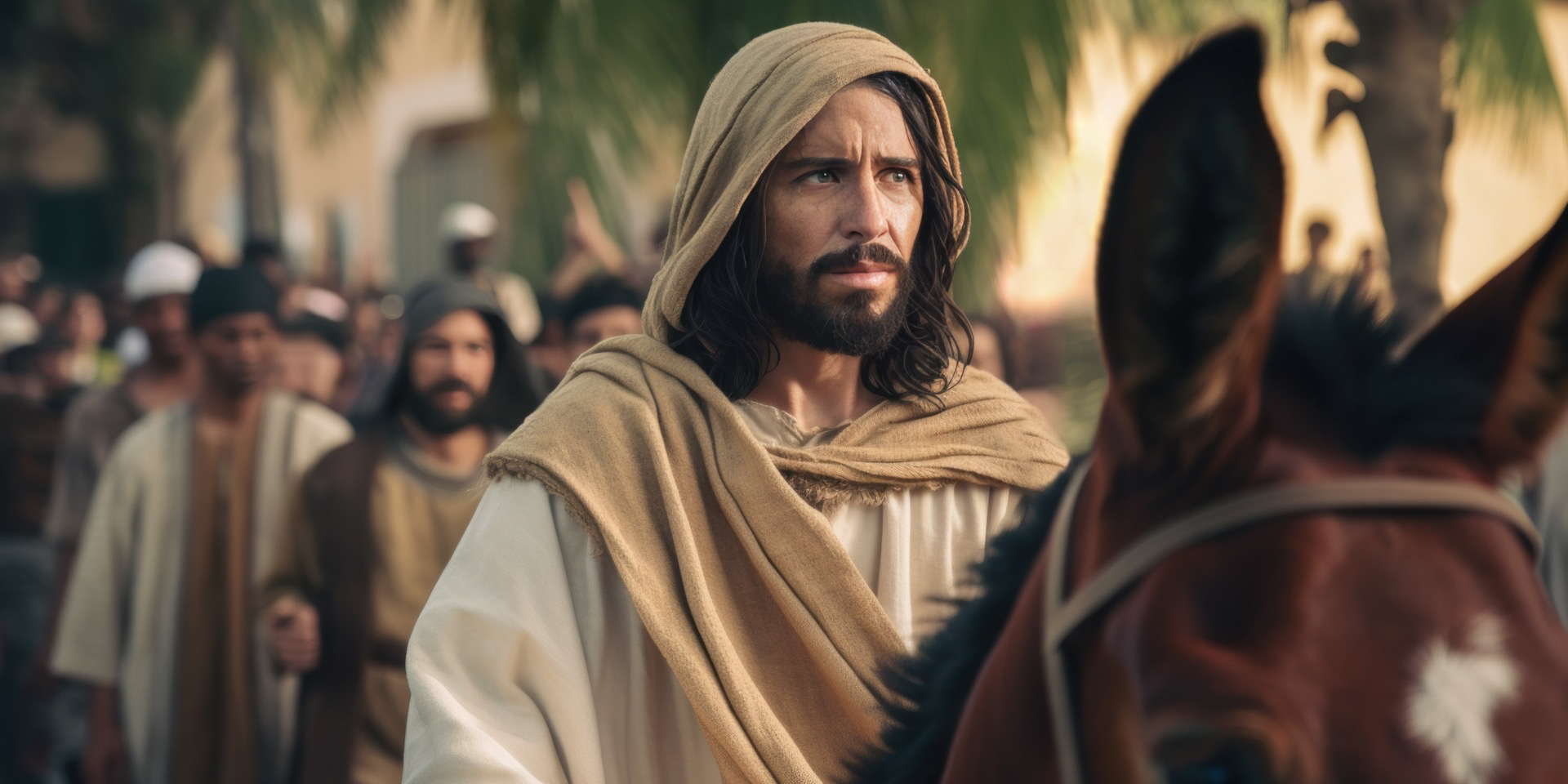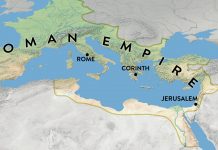Jesus had the highest regard for the Scriptures. The Gospels show that He was familiar with the content of the Scriptures, which He saw as the final authority for establishing truth, rejecting temptation, and choosing the way forward in the present and the future.
The Gospels provide some useful information in the effort to reconstruct the general view of the Scriptures that existed in the time of Jesus. The Scriptures were read publicly, especially at Sabbath services (Luke 4:16-20). Reading them required some preparation, as the texts were written in cursive, not always legible, without spaces between words, and without vowels.[1] The reader had to know their content beforehand in order to be able to proclaim the sacred text to the public with ease. Jesus had this ability.
The sacred writings were preserved in synagogues and in the Temple in scrolls, forming collections that were regarded with deep reverence. The storage of the scrolls meant setting up a small space, similar to today’s bookshelves. Jesus refers to a tripartite system of organisation, consisting of the scrolls that made up the “Law of Moses,” those classified as the “Prophets,” and those that comprised the collection of “Writings.”[2] In public ministry—in speeches or private conversations—Jesus regularly quoted from these collections. At the Last Supper with the disciples before His Ascension, Jesus suggests a method of studying the Scriptures that treats the collection as a whole: “This is what I told you while I was still with you: Everything must be fulfilled that is written about me in the Law of Moses, the Prophets and the Psalms” (Luke 24:44).[3]
Jesus recognised the divine authority of the Scriptures. This is evident from the way He used them to settle important issues in disputes with the intellectual elite of His day. The controversy over the “certificate of divorce” is one such example. While the scholars of the time distorted the meaning of this law—which at the time that it was given by Moses limited separations, prevented abuse, and gave dignity to women—Jesus appealed to God’s original intention for the family: “‘Haven’t you read’, He replied, ‘that at the beginning the Creator “made them male and female”, and said, “For this reason a man will leave his father and mother and be united to his wife, and the two will become one flesh”? So they are no longer two, but one flesh. Therefore what God has joined together, let no one separate'” (Matthew 19:4-6; cf. Genesis 2:24). For Jesus, the Scriptures formed the basis of life decisions. In this case, the Genesis narrative was understood literally, revealing the Creator’s ideal for the family—namely the loving, eternal union of a man and a woman.

The Scriptures counter the attacks of the devil
For Jesus, the Scriptures were also the secret of victory over the devil. The temptation to use His power as the Son of God for His own benefit and turn stones into bread was rejected by Jesus with the following words: “It is written: ‘Man shall not live on bread alone, but on every word that comes from the mouth of God'”(Matthew 4:4; cf. Deuteronomy 8:3). In the same way, He rejected the elaborate temptation in the temple, for which the tempter this time quoted in part from the Scriptures: “It is also written: ‘Do not put the Lord your God to the test'” (Matthew 4:7; cf. Deuteronomy 6:16). During the last temptation, the devil offered Jesus the kingdoms of the earth in exchange for His worship. Jesus chose the hard way, the way of the cross, the uncompromising way: “Away from me, Satan! For it is written: ‘Worship the Lord your God, and serve Him only'” (Matthew 4:10; cf. Deuteronomy 6:13).
Jesus consistently turned to the Scriptures. He did so in the context of disputes with the elites of His day, in battles with demonic beings, and much more.
In quiet moments, He maintained His connection with the Father by studying the sacred scrolls. Jesus sought to fulfil the Father’s will as revealed in the Scriptures (Matthew 5:17; John 4:34; 5:30; 6:38). For Jesus, always fulfilling God’s revealed will became His essence, His way, and the reason why the perfect example of Jesus is “the way, and the truth, and the life” (John 14:6).
The Scriptures reveal the future
Jesus emphasised the eligibility of the Scriptures in predicting the future. As He studied the Scriptures, Jesus became convinced that they spoke of His identity and mission. He began His public ministry knowing that He was the Anointed One, that He was the Messiah, the one who fulfilled the prophecies of the Scriptures. At His own baptism, to dispel John’s hesitation, Jesus justified His choice in the following way: “Let it be so now; it is proper for us to do this to fulfil all righteousness” (Matthew 3:15). And shortly afterwards, when asked to read from the scroll of Isaiah in the synagogue at Nazareth, Jesus deliberately unrolled the scroll at the messianic prophecy of Isaiah 61:1. After reading the text, to everyone’s amazement, He declared, “Today this scripture is fulfilled in your hearing” (Luke 4:21). In the same way, Jesus taught His disciples that the messianic prophecies of the Scriptures, written centuries before, had been fulfilled in Him. “With this new hermeneutical impulse, the apostles studied the Scriptures in order to know and proclaim Christ better.”[4]

If the messianic prophecies revealed in the Scriptures foretold the identity, public ministry, and circumstances of Jesus’ death and resurrection—or, in other words, anticipated the first coming—another series of prophecies were interpreted by Jesus as referring to the future in relation to His time. Jesus’ words on the Mount of Olives contain such examples. Speaking of the destruction of Jerusalem in the near future, Jesus based His prediction on the prophecies of the biblical book of Daniel: “So when you see standing in the holy place ‘the abomination that causes desolation,’ spoken of through the prophet Daniel—let the reader understand—then let those who are in Judea flee to the mountains. Let no one on the housetop go down to take anything out of the house. Let no one in the field go back to get their cloak” (Matthew 24:15-18).
When Jesus spoke of the circumstances of His return at the end of history, He predicted signs in the natural world based on the text of the book of the prophet Joel: “Immediately after the distress of those days the sun will be darkened, and the moon will not give its light; the stars will fall from the sky, and the heavenly bodies will be shaken. Then will appear the sign of the Son of Man in heaven” (Matthew 24:29, 30). The examples I have given demonstrate Jesus’ firm belief in the ability of Scripture to predict the future.
The Scriptures are the source of new teachings
The theological innovations of Jesus did not contradict the Scriptures. On the contrary, new meanings, interpretations, and concepts were derived from the revelation of the Scriptures. To argue for the radical idea that the Messiah must be divine in nature—a concept challenged by the theology of the day because it would seem to violate monotheism and could be considered blasphemous—Jesus cited Psalm 110 as an argument. The Old Testament poem begins with a conversation between two Gods, one of whom is identified as the Lord of David (“my Lord”).
The logic of Jesus’ argument forced the listeners to make room for the radical conclusion that the Messiah, “the Lord of David,” would be divine in nature: “Why do the teachers of the law say that the Messiah is the son of David? David himself, speaking by the Holy Spirit, declared: “‘The Lord said to my Lord: “Sit at my right hand until I put your enemies under your feet.”‘ David himself calls him ‘Lord.’ How then can he be his son?” (Mark 12:35-37).[5]
Jesus’ statements such as, “You have heard that it was said… but I am telling you” reveal the same principle of innovation based on past revelation. By contrasting the meaning accepted by His contemporaries with the new, much deeper meaning, Jesus does not abolish the former. On the contrary, the basic meaning was enriched by new constellations of ideas that do not contradict it. For example, Jesus made it clear that the meaning of the commandment “You shall not murder” is much deeper than the basic meaning it expresses, and includes violent language and even destructive emotions (Matthew 5:21, 22).
Conclusion
Jesus studied the Scriptures because He believed in the divine message they contained. It was in the Scriptures that Jesus discovered His Father at an early age. He treasured His identity as the Son of God as a precious pearl. In His dual nature as Son of God and Son of Man, Jesus Himself became the living Scripture, the Word made flesh. The model He gave to humanity exemplified the perfect fulfilment of God’s words, and His words gave deeper meaning to the words He himself had inspired the prophets in the past to write.
Daniel Olariu argues that Jesus had the highest regard for the Scriptures. The Scriptures had the last word in establishing the truth and thwarting the devil’s attacks. They provided guidance for the present and the future.



















